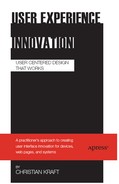Step 3: Run the Workshop
Now it's time to run the workshop, as illustrated in Figure 13-3. One advantage of doing innovation with users is that it gives you a good chance of designing things that actually cover a real user need. You can also verify your solutions quickly, since you can ask the users questions right away.

Figure 13-3. Example of a lead user workshop
Another advantage is that your users will likely come up with quite different solutions than you do. You may be stuck in a company- or technology-driven mindset that the lead users do not have.
Finally, during the workshop you can identify user needs and core tasks that you might have difficulty finding in an interview. During the workshop you can focus your innovations around the specific needs, core tasks, and pain points of the lead users that you invited, or you can use general needs for the target users as the basis of your innovations. But keep in mind that users generally will want to solve their own problems rather than somebody else's.
A structured approach during the workshop is to create innovations for the five user needs, core tasks, and pain points that each of the lead users have prepared. For further details on specific methods for this, refer to Chapter 4 for identifying user needs, and Chapters 6 and 9 for innovating around core tasks and pain points, respectively.
At the end of the workshop, you can spend some time with your lead users to prioritize the solutions and ideas that were created, thereby reducing (but not eliminating) the need for subsequent verification of your solutions. When prioritizing, you should listen to the users' opinions, but you can also contribute with feasibility evaluations, and so on.
